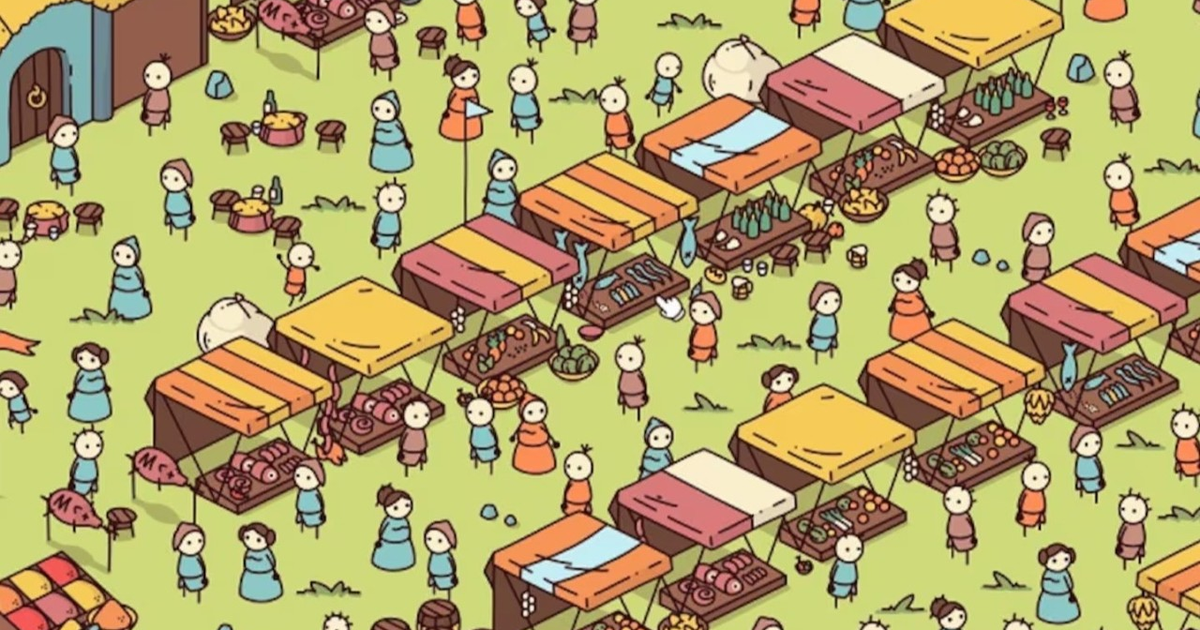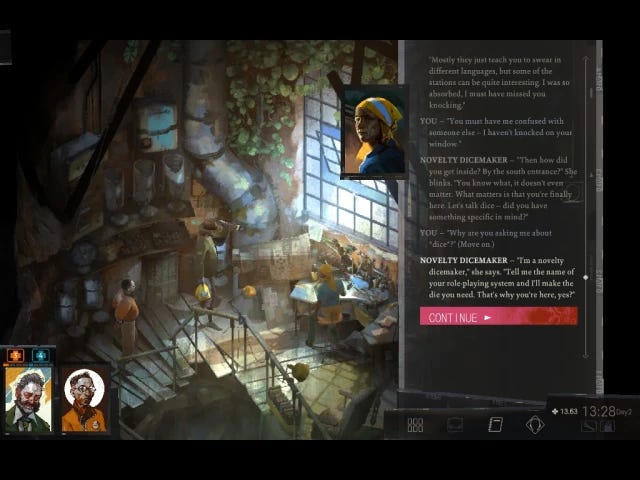- Signposted
- Posts
- Signposted #19
Signposted #19
Featuring Skydance's Behemoth, A GDC Talk, LinkedIn Live on Skill Progression, and the Best of Game Design.

Currently playing Skydance’s Behemoth
Hey Designer,
Welcome back to issue #19 of Signposted!
Sorry for the delay, I was releasing a game. 😉
Skydance’s Behemoth to be exact:
If you haven’t played it, give it a shot, it’s a lot of fun. It’s on Steam, PSVR2, and Quest 2/3
If you have any questions regarding the design of the economy, progression, or combat feel free to reach out via LinkedIn or in the Discord at the link below.
On top of that I’m getting to check off a bucket list item! I’ve been selected to give a talk at GDC this year as part of a series of micro talks.
My part will guide listeners through a crash course in building a video game economy as part of a systems design microtalk series. It'll also cover some common economy pitfalls and how to handle them.

GDC Student & New Dev Meet Ups
While I’m at GDC this year, I’m opening up some slots to meet up with students and newer developers who want to pick my brain on Tuesday and Wednesday.
We’ll spend 30 minutes chatting about whatever Game Dev topic you like.
Want me to look at your portfolio?
Advice for getting into the industry?
What GDC is like?
Whatever you want, this is your time.
Note: I cannot discuss pitches or anything directly related to the business of Skydance or what they’re doing in the future. I can talk about Behemoth though now that it’s out.
If you’re interested in meeting face to face at a coffee shop nearby GDC sign up via the Calendly links below:
I understand that GDC is brutally expensive and most people can’t make it, so I’m also opening a handful of slots the week of GDC for Online coffee chats via Zoom. So if you can’t make it to GDC we can still chat:
And if you’re not a newer dev, but still want to meet up, shoot me a message via LinkedIn and I’ll see if I have some time available. (I have an open profile so even if we’re not connected you can still reach me.)
Phew that was a lot. Thanks for sticking it out through the announcements! Now on to issue #19!
In this issue we’ve got a LinkedIn Live and the Archive is back:
I hosted a LinkedIn Live covering skill, progression systems, and your questions answered!
Finding the Fun: Archero Part 1 – A look at the moment to moment mechanics which mad Archero a smash hit!
In the best of series, we’ve got some amazing pieces:
We’re diving into a juggernaut of a tome in the Ultimate Game Economy Handbook.
The Bottom Feeder makes his return to discuss why stories in games are so tough to get right.
How Removing Loot Boxes in Brawl Stars lead to their highest revenue ever.
A walk through designing a Halo Extraction Shooter with Andrew Chambers.
And last but not least, Masahiro Sakurai discusses how no masterpiece has bad audio.
If you enjoy Signposted please be sure to share it so more people can enjoy this content! 😁
Let’s get into it!
Monthly Analysis and Updates
Design Chat Event
Recently I hosted a LinkedIn Live where I discussed some modern Skill/Ability Progression systems and took questions from the audience. If you’re already familiar with my breakdown of various skill progression systems, feel free to skip to the 35 min mark for the Q&A portion.
The full recording can be found here:
The Best of Game Design
From the Archives: Finding the Fun: Archero Part 1 – Gameplay
In issue 6 we're taking a look at the gameplay mechanics and enemies of Archero!
Archero is a mobile roguelite.
The player enters chapters consisting of stage after stage of enemies, becoming stronger along the way.
But why is it fun?
Move vs Attack
The player must choose between moving and attacking.
When the player is standing still, their archer automatically fires at the closest enemy to them.
When they are moving, they don’t fire.
The balance of players needing to move to avoid enemies/obstacles or stay stationary to attack creates the initial layer of fun.
Enemies
Melee - these are enemies that simply charge the player.
Spread ranged enemies – These are enemies which shoot slow moving projectiles in various directions around them which spread out after a time.
Ranged enemies – these are enemies which attack the player at, you guessed it, range.
They typically have a red line that appears for a few seconds before the attack triggers to let the player know an attack is coming.
Hidden enemies – These are enemies which either jump in the air or go underground so the player cannot attack them for some time.
Tank enemies – These are slow-moving, large enemies which are typically strategically placed to maximize the amount of space in the room they can attack the player in.
Combinations of these various enemy types further reinforce the player moving around to avoid them.
Dealing with each type effectively builds further on the initial fun to create a puzzle-like feel in each encounter.
Stage Layout
Most chapters are broken down into multiple stage groups.
Each stage group contains an intro stage, four enemy stages, an angel stage, four additional enemy stages, and a boss stage.
Intro Stages
Intro stages typically have a wheel of fortune kind of minigame.
When the player spins the wheel, they are given a guaranteed amount of gold.
Enemy Stages
Enemy stages are stages where a wave of enemies spawn.
Angel Stages
Angel stages are stages with only an angel in the middle.
The players get an option from the angel, either an additional ability or heal some of the player’s HP.
This is a nice break from the chaos of combat and further rewards skilled players or helps ones which aren’t doing so well.
If a player has not been playing as well and has low HP, they can take the risk and accept the power up over the healing in hopes that they will do better with it.
This risk reward mechanic is particularly interesting.
Boss Stage
The player challenges the boss typically in what feels like a traditional bullet hell manner.
This repeating cycle of enemy stages > Angel > enemy stages > boss allows the player to know what to expect and is perfect for mobile as each encounter is bite-sized.
Each encounter is probably under a minute long and the player can rest for a bit before challenging the next room.
Abilities
Each time a player challenges a chapter they can gain abilities.
These abilities are gained when the player kills enough enemies, chooses to receive them from the angel, bought them from the devil, or the abilities are gifted at the very beginning of the intro stage, if they’ve unlocked the glory talent.
Abilities reset upon death.
The Fun – Short Term
At the end of each section we talked a little bit about how each of these contribute to the short-term fun of the game.
Let’s do a quick review:
Move vs Attack
Tight controls and restricting the player to only do one action at a time makes the game easy to understand and keeps it simple enough so it doesn’t overwhelm players.
Enemies
With clear enemy types and consistent attacks, the player can understand and figure out how to deal with the enemies in each encounter. This reinforces the move vs attack mechanic and builds upon it to create a puzzle feel within each stage.
Stage Layout
By having a consistent flow of quick encounter > break > quick encounter, the game is perfect for mobile.
The maps typically fit within a phone screen (except for chapter three) which allows the players to see all the enemies at once and reinforces a puzzle feel.
Procedurally generated stages help make each run continue to be interesting.
The Angel and Devil spice gameplay up further by helping less skilled players and increasing the challenge for more skilled players.
Abilities
Giving the players some control over short term progression, while making sure their options are random each time, contributes to making every run feel unique while allowing them some control.
This helps to keep things interesting on repeated playthroughs.
These pieces combine to make the game interesting and enjoyable in short term repeated playthroughs.
Disclaimer: All of the following articles, podcasts, and videos are not written, made, or owned by me. I am only curating, commenting on, and highlighting the best game design work I can find from mostly recent posts.
The Best of Written
🏆 Issue #19 Scott’s Pick 🏆- The Ultimate Game Economy Handbook
By Alex Wiserax
While this is considered a blog, it’s more like a tome. Alex covers his approach to building and balancing a sustainable economy and how to successfully monetize games. If you have been looking to get into economy design, I can’t recommend this enough.
Why Video Games Are Tough For Storytelling
By The Bottom Feeder
To balance out the game economy focused novel above, we have The Bottom Feeder discussing why storytelling is difficult to do right in video games. It’s an interesting take on narrative design and one of the major challenges Narrative Designers face.
Fun Fact: Pac-Man's Design Was Inspired by a Pizza Missing a Slice
The Best of Video
GDC - Removing Loot Boxes in Brawl Stars
By Frank Keienburg & Frank Yan
In late 2022, Brawl Stars decided to remove loot boxes from their game. This talk takes a deeper look into why the Brawl Stars team decided to remove their biggest money makers from the game. It also dives into the aftermath and what they learned from doing so. It’s easily one of my favorite talks from the last few years.
Designing a Halo Extraction Game
By Andrew Chambers
In this video Andrew Chambers walks the viewer through how he’d design a Halo Extraction Shooter. I think this video is particularly valuable for newer designers who want to understand the process of veteran game designers more clearly. (and it’s simply an enjoyable video 😛 )
Note: If you have a blog, podcast, or video channel you would like to be considered for the Bi-Weekly Best of Series, please send me a link and I’ll add it to the feed.
Bonus Video: No Masterpiece Has Bad Audio
By Masahiro Sakurai
Every once in a while I come across a Sakurai video which covers a topic which seems obvious, but is often times overlooked. This is one such video.
And that’s it for Signposted #19. Thanks for reading!
Scott
Additional Resources:
This section are some additional resources I’m putting together to help out designers at specific pain points in their career. The list will grow with time.
Signposted wouldn’t be possible without the support Patrons. Thank you so much for everyone who reads, shares, or financially supports Signposted.
Signposted Producers
Andreas Lopez
To become a Producer or Sponsor of Signposted, join the Signposted Patreon.
If you enjoy Signposted please be sure to share it so more people can enjoy this content! If you REALLY enjoyed it, you can support Signposted on Patreon



